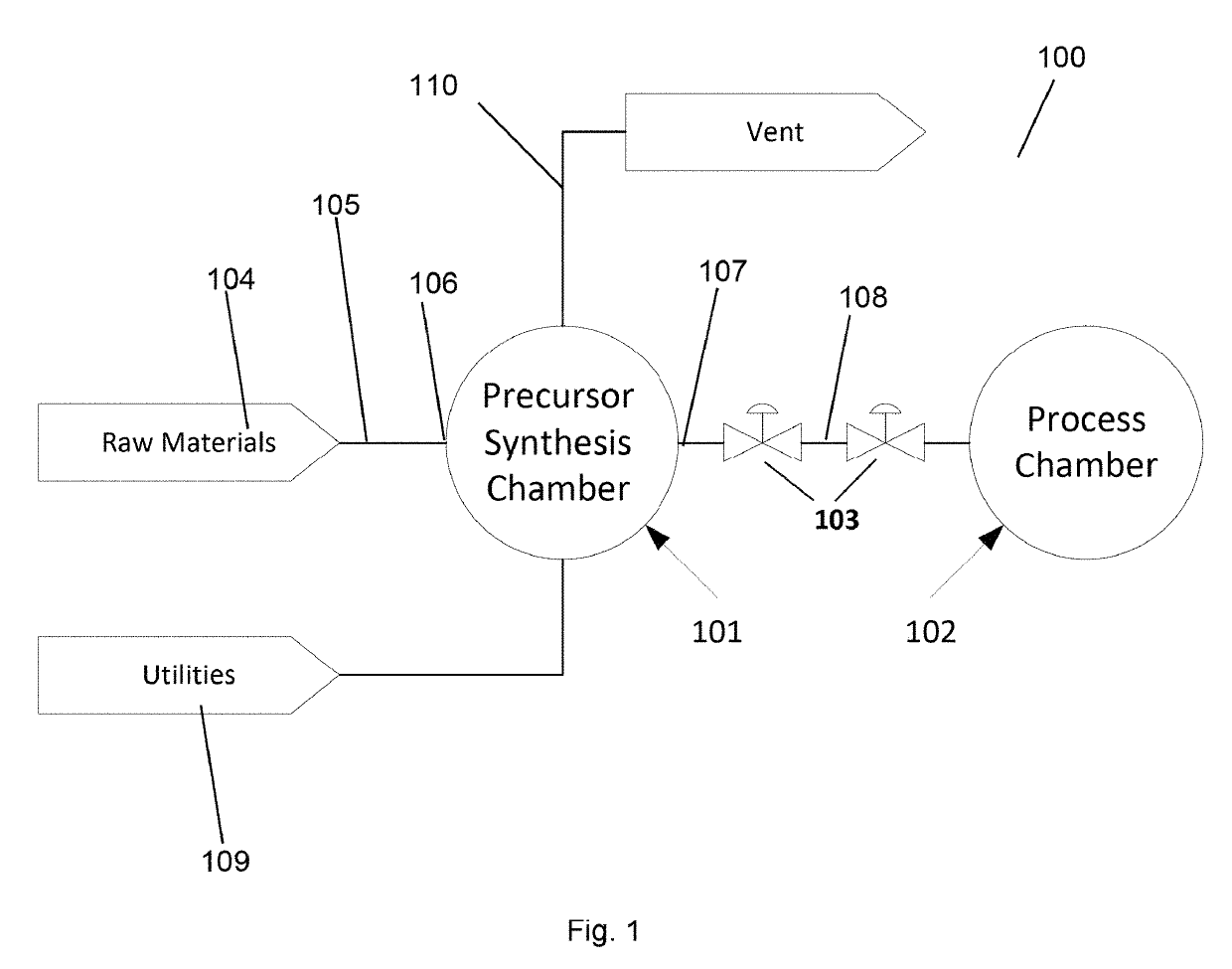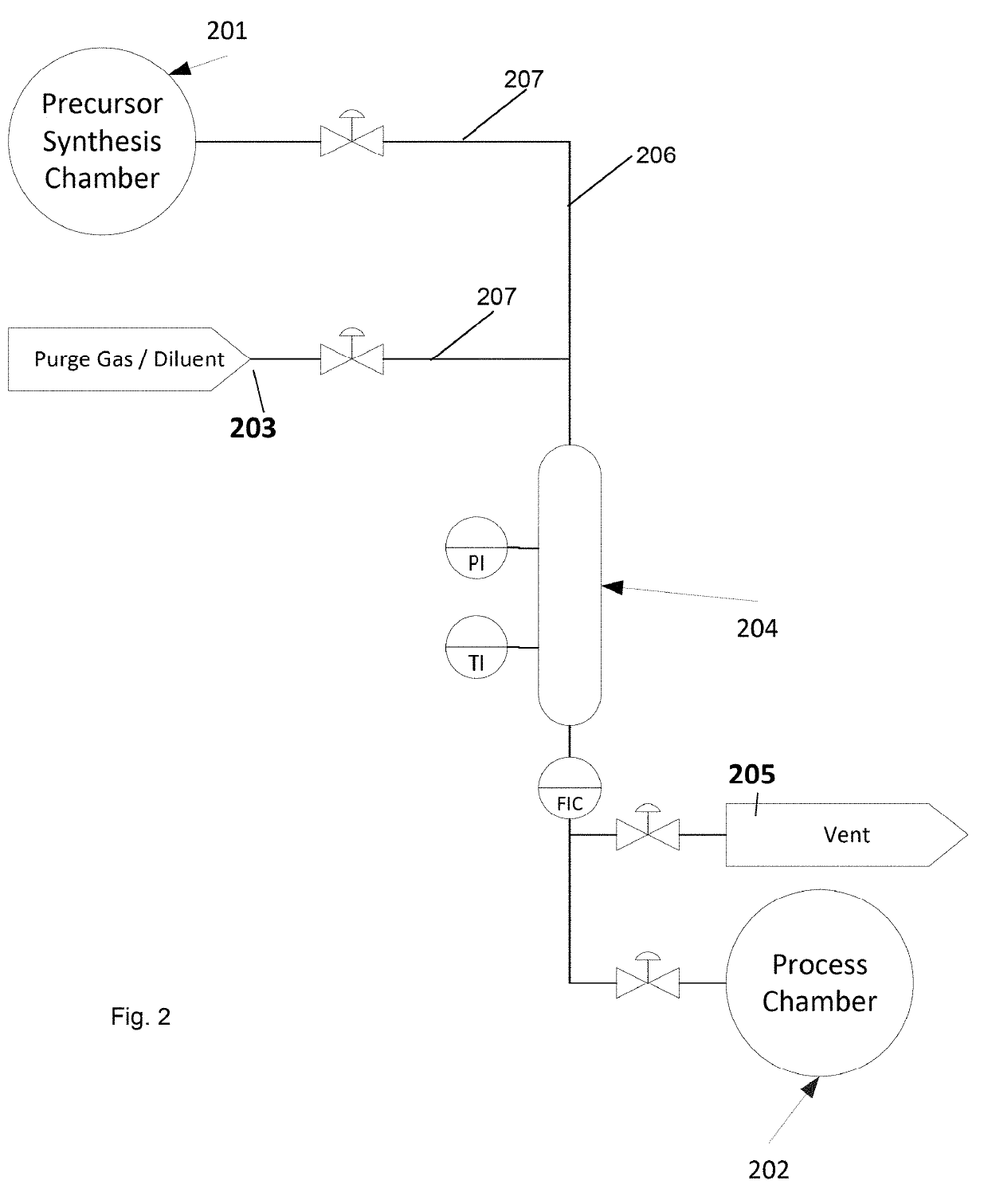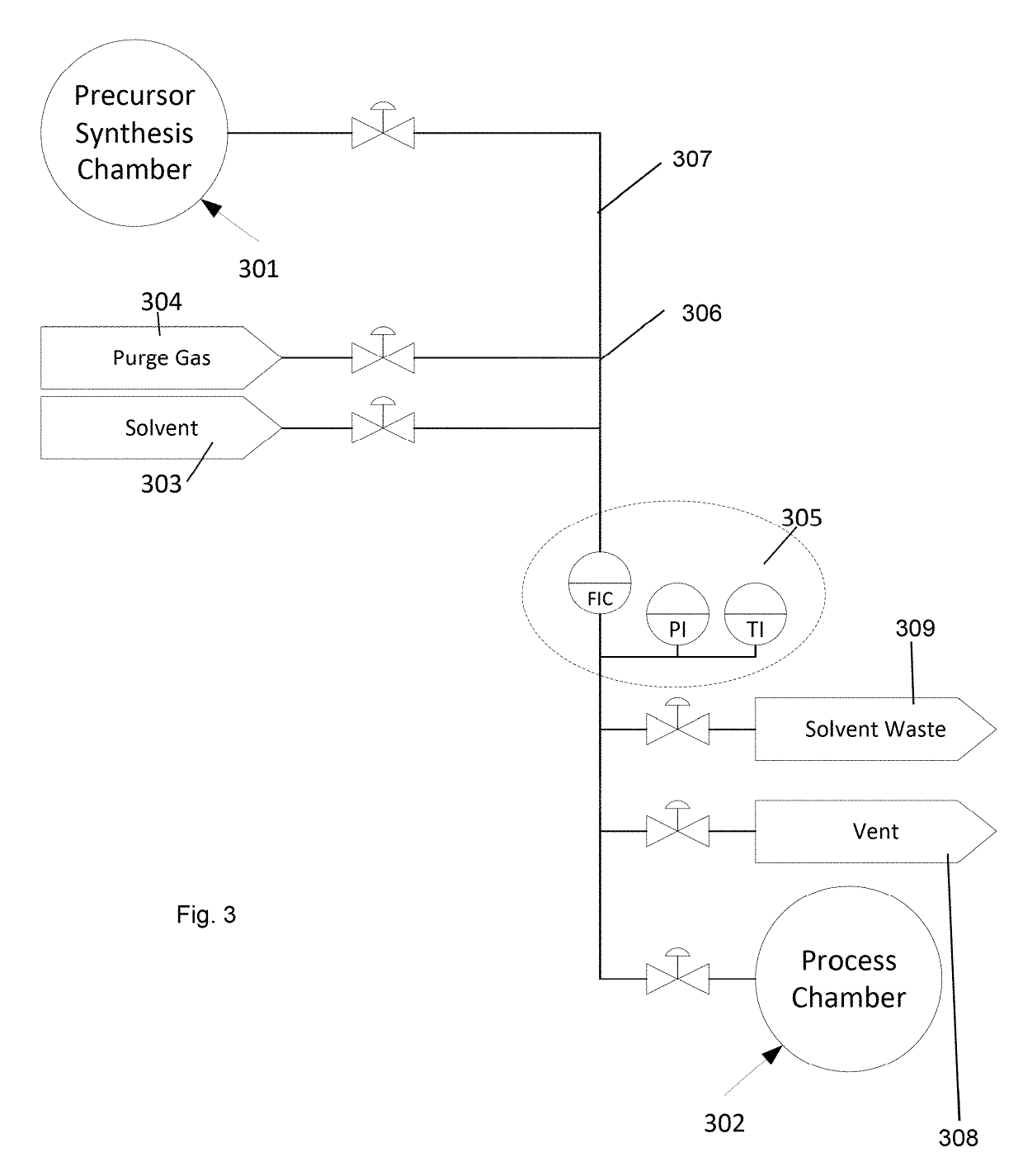Methods and System for the Integrated Synthesis, Delivery, and Processing of Source Chemicals for Thin Film Manufacturing
a technology of source chemicals and integrated systems, applied in the direction of chemical vapor deposition coatings, metal material coating processes, coatings, etc., can solve the problems of inability to meet the requirements of production, so as to eliminate unnecessary steps and eliminate the inherent redundancy of storage and transportation
- Summary
- Abstract
- Description
- Claims
- Application Information
AI Technical Summary
Benefits of technology
Problems solved by technology
Method used
Image
Examples
Embodiment Construction
[0044]According to an embodiment of the present invention, methods and systems are provided for achieving a fully and tightly controlled process and system for fabricating thin film structures by generating and consuming reactive or difficult-to-handle precursors, utilizing real-time and in situ analysis and control, and enabling complete coupling and integration of the precursor synthesis process / system with the thin film formation process / system. The integrated synthesis, delivery and processing of source chemicals is an enabling embodiment for reproducible and reliable thin film fabrication.
[0045]Embodiments of the present invention may be applied in any manufacturing process in any industrial setting, including, but not limited to, the semiconductor (computer chip), aircraft, energy, sensor, medical, biological, chemical, and defense industrial sectors.
[0046]Referring to FIG. 1, there is shown a schematic drawing of an integrated precursor synthesis (i.e., generation) and thin f...
PUM
| Property | Measurement | Unit |
|---|---|---|
| temperature | aaaaa | aaaaa |
| temperature | aaaaa | aaaaa |
| temperature | aaaaa | aaaaa |
Abstract
Description
Claims
Application Information
 Login to View More
Login to View More - R&D
- Intellectual Property
- Life Sciences
- Materials
- Tech Scout
- Unparalleled Data Quality
- Higher Quality Content
- 60% Fewer Hallucinations
Browse by: Latest US Patents, China's latest patents, Technical Efficacy Thesaurus, Application Domain, Technology Topic, Popular Technical Reports.
© 2025 PatSnap. All rights reserved.Legal|Privacy policy|Modern Slavery Act Transparency Statement|Sitemap|About US| Contact US: help@patsnap.com



